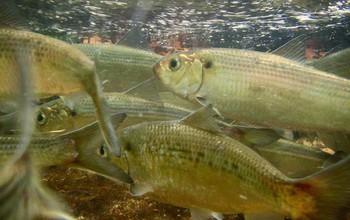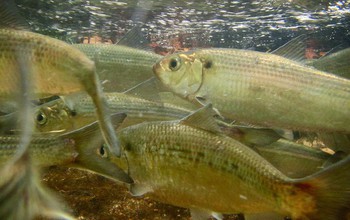
Decadal Changes in Zooplankton Abundance and Fish Distributions
Decadal Changes in Zooplankton Abundance and Fish Distributions
Long term changes in zooplankton abundance and biovolume were documented prior to the funding of NES LTER. The distributions of many fish species in the Mid-Atlantic Bight are shifting northward in the warming ocean. Dominant species of zooplanktivorous forage fishes have interannual, seasonal, and species-specific diet preferences. It remains unresolved how decadal changes in zooplankton influence this higher trophic level.
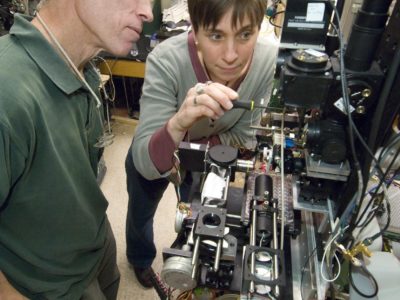
Spatiotemporal Dynamics in Microzooplankton
Spatiotemporal Dynamics in Microzooplankton
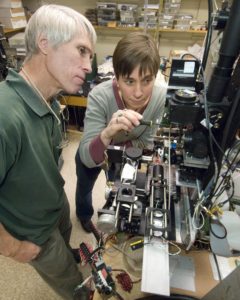
Co-authors Rob Olson and Heidi Sosik have worked on development of the FlowCytobot series of automated submersible plankton sensors at WHOI since the late 1990s
Credit: Tom Kleindinst
Thanks to automated imaging approaches developed by NES LTER researchers, unprecedented insight has been gained into variations in microzooplankton biomass and diversity across a broad range of space and time scales. In addition, studies in Narragansett Bay documented strong microzooplankton grazing pressure on phytoplankton throughout the year, irrespective of season.
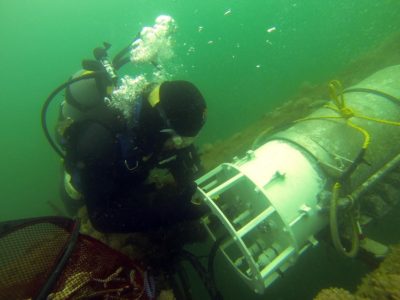
Shifts in Phytoplankton Phenology are Associated With Warming Trends
Shifts in Phytoplankton Phenology are Associated With Warming Trends

Co-author Alexi Shalapyonok secures FlowCytobot (FCB) underwater at the Martha’s Vineyard Coastal Observatory (MVCO) tower. FCB, an automated submersible flow cytometer, operates unattended at MVCO for 6 months or longer, measuring thousands of individual microscopic plankton every hour.
Credit: Sean Whelan
Phytoplankton bloom dynamics at Martha’s Vineyard Coastal Observatory (MVCO) are sensitive to temperature variability on both seasonal and decadal scales. Multi-year sampling has shown that the genetic background of phytoplankton is diverse and changes rapidly in coastal shelf waters. Ongoing NES LTER observations emphasize the complementary nature of multiple approaches (sequencing, imaging, and flow cytometry) to better document and understand changes in plankton diversity and how it impacts the ecosystem.

